Boiling Steam: 10 Years Anniversary
Today marks the 10th anniversary of Boiling Steam. We started on this journey back in October 2014. Looking back, this was a completely different world for Linux gamers back then. Just imagine a second: GOG was supporting Linux proactively. I know right!? Sounds like an sci-fi movie! And… there was no Proton. And of course, there was no Steam Deck. Steam had just started to support Linux a few years back as an additional platform, and the Steam Machines initiative from Valve had just been announced, with the strange looking Steam Controller.
2014 to 2016: Steam Machines
Younger gamers may not remember what the Steam Machines were. The big idea at the time was to let 3rd parties build console-like PCs that would run a gaming OS built by Valve, SteamOS. The OS would run on Linux. At the time, SteamOS has no compatibility layer support for Windows, and could only run games made with native Linux clients, which meant that porting games was necessary.
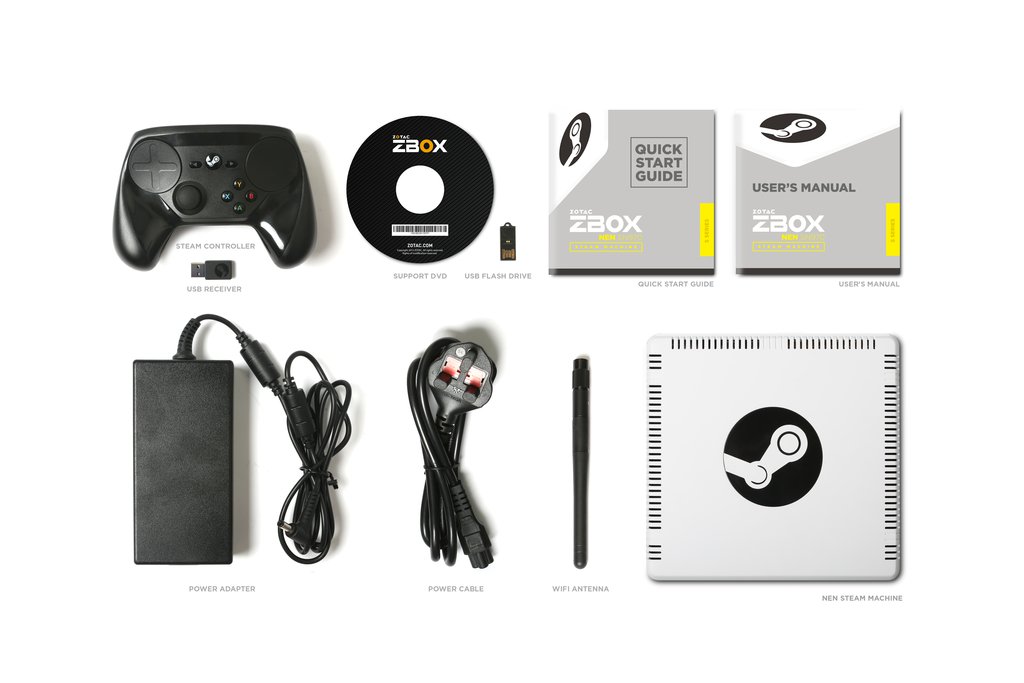
The Steam Machines ended up being a failure (but it did not have to be). A failure even recognized by Gabe himself later on, in passing.
Even the partners of Valve like Alienware explained that the idea of Steam Machines lost priority over time. It was just not the right concept, and not the right execution. But the Linux gaming scene did not stop there. And some of the great concepts such as the Steam Controller API lives on to this day.
2016 to 2017: Rebuilding
While our community was small, a few companies went on to support Linux as a target platform: Feral Interactive, Aspyr, VirtualProgramming, as well as a few big developers and publishers who decided to make their own ports, internally. The market was small, and it was difficult to get more than a few big games every year. For a long time, Feral Interactive was the most reliable source of AAA ports. But on the same hardware, Linux could not get the same performance as Windows.
The graphics API used on Linux were not helping. OpenGL is a great API to work with, but there were numerous differences between Nvidia and AMD in terms of support, and tricks to use to get the best framerates. Ultimately, the Khronos group released Vulkan as a new API to compete with DirectX12, which helped porters tremendously to get more consistant performance.

While we were getting a few more ports every year, running better thanks to Vulkan, WINE was still humming along and supporting more and more Windows games. And a new project came out of nowhere, called DXVK, started by a talented hobbyist interested in having Near Automata run on Linux. DXVK made it possible to convert DirectX11 calls on the fly to Vulkan calls, instead of OpenGL. This resulted in major performance improvements. Thanks to this, I was able at the time to play Witcher 3 from start to finish on Linux (the GOG version). For me, that was a sign that we were ALMOST there.
2018 to 2021: the Age of Proton
And 2018 was indeed a turning point. Valve progressively revealed that they were working on a compatibility layer to run Windows games, later known as Proton, based on WINE as well as a number of other initiatives that plugged into it. The idea was to have a one-click install of Windows games on Steam, and make running Windows games seamless on Linux. It started with a whitelist from Valve to indicate what games could work out of the box. And a little later in the same year, ProtonDB started out of a community work to document what unlisted games could work with Linux and Proton, and the rest is history: it’s been a great tool since then, and we have been actively using it at Boiling Steam to draw a number of conclusions, such as the monthly trend of distros used for Linux Gaming.
By the end of 2018, I could see the writing on the wall for the companies specialized in porting, and it went exactly this way.
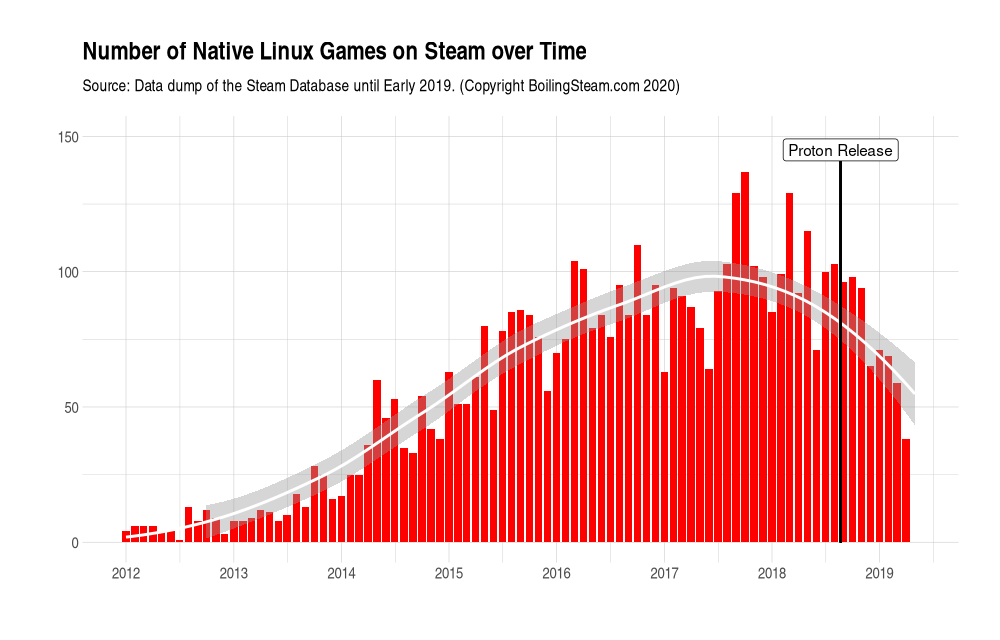
There was just no reason for Feral or other to spend 6 months to port games when Proton provided Day 1 compatibility. Even if Proton had worse performance than a fine-tuned port by Feral, the wait had no financial substance. And professional ports are mostly a thing of the past now.
Later in 2020 came the cloud gaming rush. The hot new talk for a while was Stadia from Google. This was also based on Linux, but they basically relied on the developers doing the porting themselves, to Vulkan. It seems like the lessons of the Steam Machines (but now, on the cloud) were not learned, and it took only a few years for Google to kill yet another of their services. We found out later on what were some of the contributing factors to its decline.
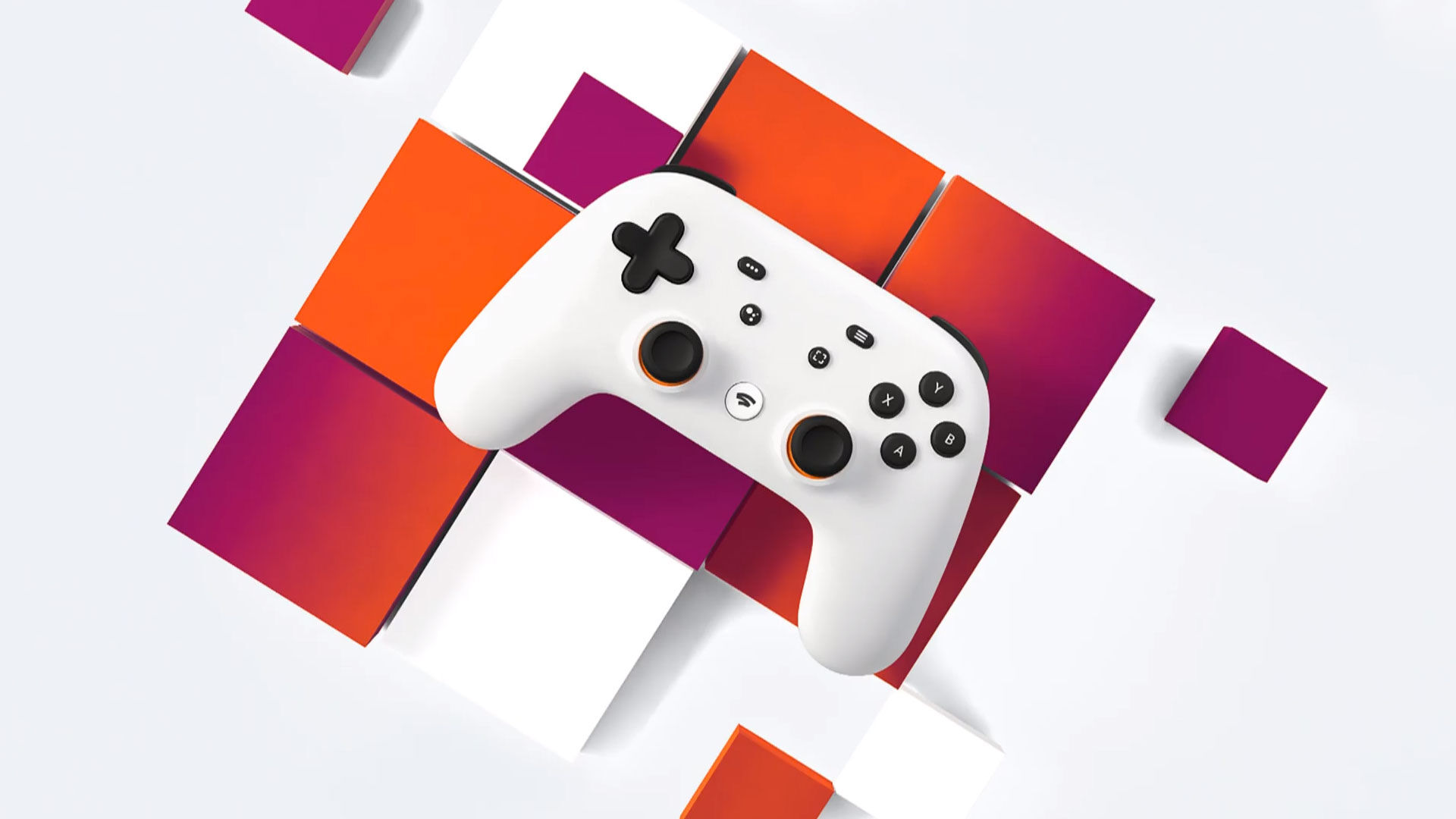
But Stadia’s downfall had no impact on the Linux gaming scene. Proton was getting us everywhere. Little did we know that Valve had other plans to go even beyond.
2021 to 2024: The Steam Deck Era
About 10 years of work down the road following the first Linux support on Steam led to a single machine that would be the convergence of it all. The Steam Deck is a small beast that runs SteamOS (Arch-based this time), and runs pretty much everything using Proton. The hardware itself is impressive, able to run numerous AAA games thanks to a powerful APU and very very fast VRAM for its time. Its power envelope hits a sweet spot between performance and battery life, things that its competitors struggle with. It features haptic trackpads similar to what we had on the Steam Controller. It builds on the Steam Controller API to make it work with virtually any kind of game, whether controller or mouse based.
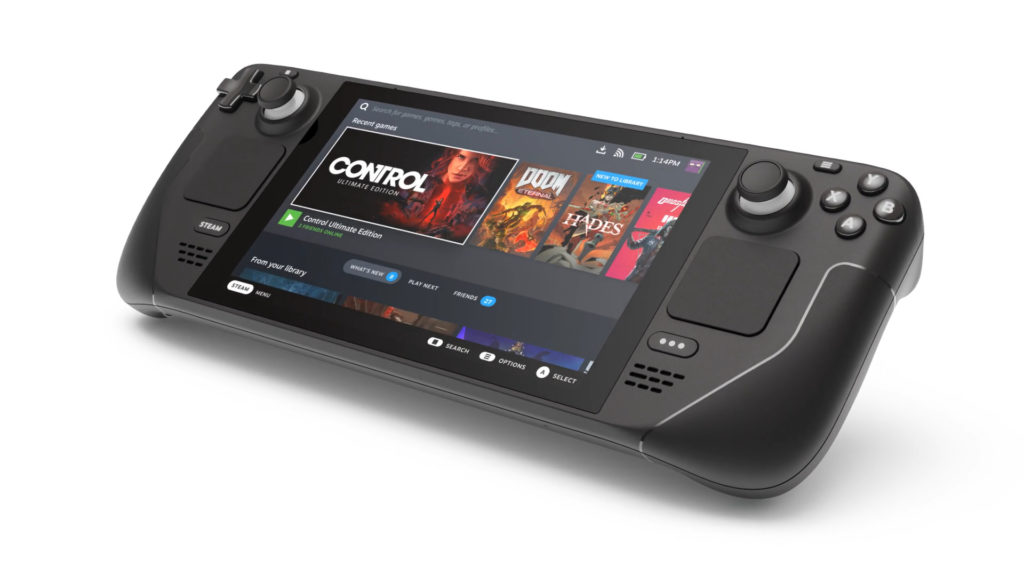
Anti-cheat had always been a major bane of Linux gamers who want to play online, and Valve has worked on this by helping with Battleye integration as well as Easy Anti-Cheat. Unfortunately, not all developers or publishers decide to do the extra work needed to support the Steam Deck or Linux, and we end with things like the GTA5gate recently.
Yet the Steam Deck is a major success. While we don’t know for sure how many units it has sold, it’s in the range of several millions by now. The release of the OLED version led a new surge of sales as well. As itself, the Steam Deck represents the absolute proof that Linux can be a extraordinary gaming OS, and that it lacks almost nothing compared to its competitors on consoles or on PC. The fact that we had the Steam Deck front and center at the Tokyo Games Show 2022 was huge in itself.
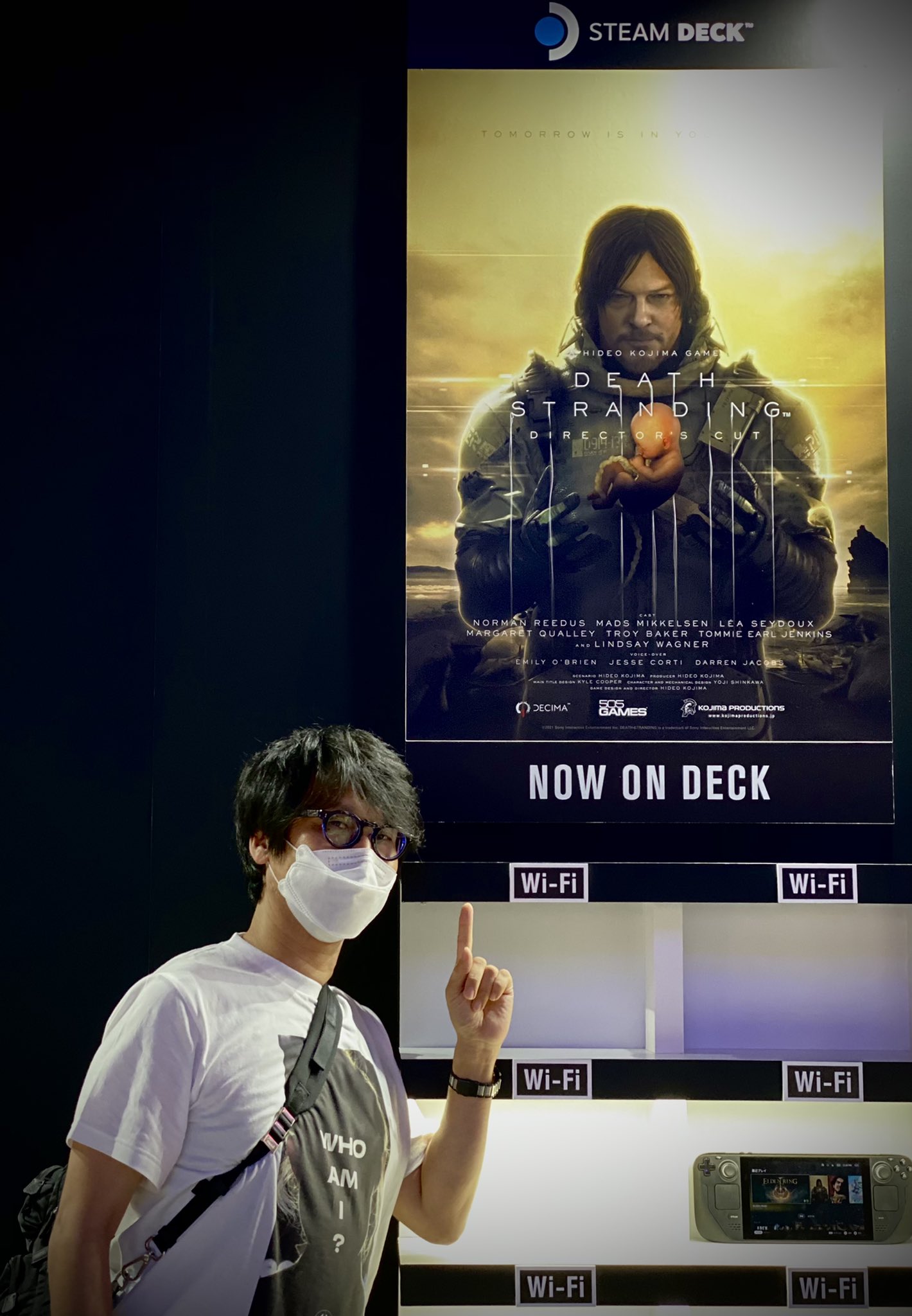
And the competition is coming. Following the introduction of the Steam Deck, other manufacturers have jumped in to get a share of that juicy market. All of the use Windows for now, but there’s now also another Linux contender shaping up with PlayTron, also based on Linux and using a Proton-like compatibility layer, and able to run on a large amount of hardware. There’s also Bazzite, a community effort to bring a SteamOS like experience on the other Windows handhelds, by building on a Fedora base.
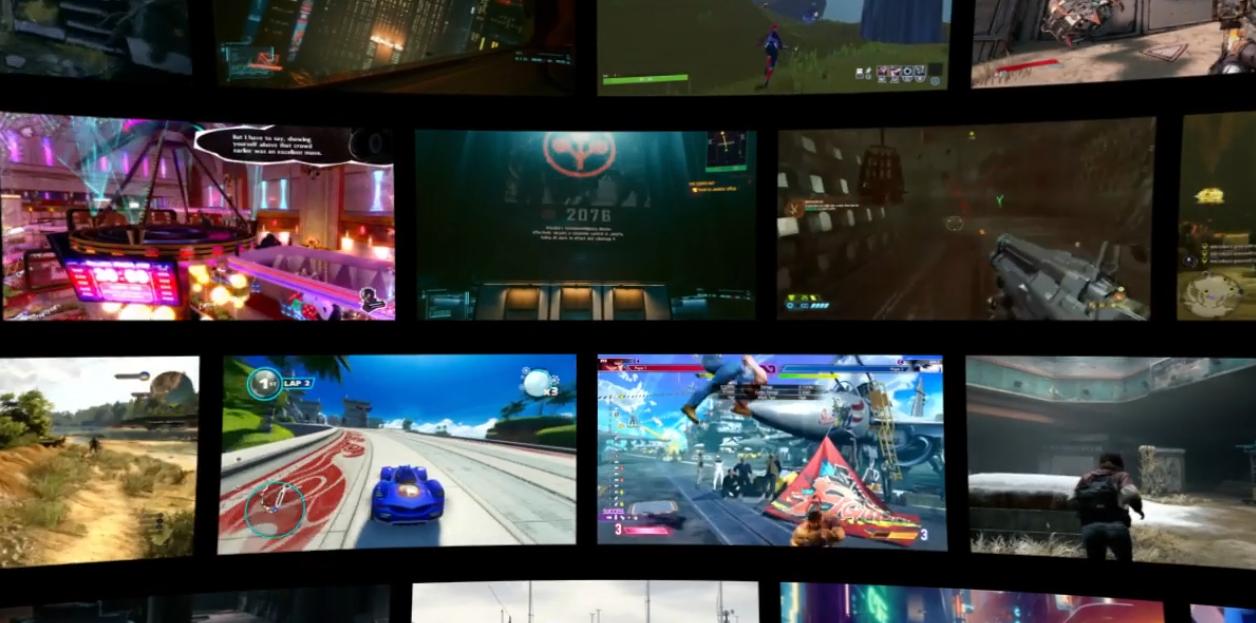
On Desktop Linux, the choice of distros among gamers is more and more fragmented. Long gone are the days where Ubuntu was the leader. Nowadays Arch reigns as the stable number one, and a horde of other distributions fight for the rest of the share.

Competition is a driving force.
Where is Linux Gaming going next?
It seems like Linux is poised to go everywhere. Making bets over the long term is tempting but full of traps as nobody can anticipate what will happen in an everchanging tech environment. Let me share where things may be headed next:
- Valve may move away from x86 at some point, and build a machine based on an ARM processor equipped with a powerful GPU. This may be the best way for them to secure a large headstart against its competitors on the handheld market.
- I have no idea if Playtron is going to become a thing, but if it does, it may become an OS you find more and more on handheld gaming devices. Nobody needs a full fledged Windows for gaming, and the space is ripe for a SteamOS like distribution that can be used everywhere. The other alternative is Valve releasing SteamOS at large for other companies to use.
- Godot should become a very strong alternative to Unity, and I expect a large share of indie game devs to use it later on. The Blender of video games making.
- Whether Valve does it or someone else, we are bound to see a Linux-based home console emerge at some point. It would not take much to build it. Marketing, distribution, and fighting against established players would be the key issue. But the whole stack is there now.
- I still don’t see how it will or can happen, but I keep thinking that the desktop, the final frontier, is now at reach as well. The next time a company tries to enter that space, they are bound to have more sucess than previous ones. There’s less to implement to make it work than ever before.
Now you can keep a copy of the above and tell me how wrong I was a few years down the road! :-)
A Final Thank You!
Thanks for being with us during all this journey. Expect to see more things from us, especially exclusive content as often as we can. Many thanks to all my colleagues as well: Podiki, Nils and Patola for their excellent contributions and advices. They are often involved in reviewing what we publish and making things better. And many thanks for our long-time contributor Mark who has since then moved to other projects.
Thank you to all Linux Gamers for hanging on through the difficult times, the ups and downs. It was certainly a bumpy ride.
But we all made it, and things are just getting started. Full Steam ahead!
